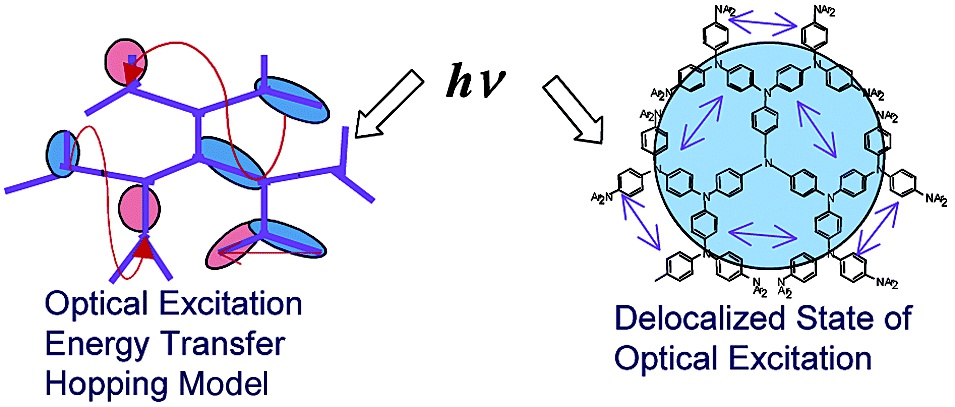Femtosecond excitation energy transport in triarylamine dendrimers
J. Am. Chem. Soc., 2002, 124 (6520-6521)
View on publisher site
Abstract
The search for a model that can be used to describe the optical excitation migration in dendrimers has attracted great attention. In most cases in a dendrimer the conjugation is disrupted at the branching point; however, the excitation is delocalized. The strength of interactions among neighboring chromophores plays a key role in determining the energy migration mechanism. Conversely, having many identical chromophores held tightly together in an ordered macromolecular architecture will allow for many dipoles to be accessible for optical excitation. Therefore, the relative orientation of dipoles will be important in determining the mechanism of energy migration. Here we report the synthesis and photo-physical investigation of triarylamine-based dendrimers. Two important synthetic steps were utilized in the synthesis. First, we employed diphenylmethyl protective groups on the amines to assist in deprotective hydrogenolysis of the larger structures. Second, highly active catalysts for formation of both di- and triarylamines that are based on a 1:1 ratio of P(t-Bu)3 and Pd(dba)2 improved reaction yields of the C−N bond formation and decreased reaction times The energy migration processes in the dendrimers were investigated utilizing ultrafast time-resolved fluorescence anisotropy measurements. The fluorescence anisotropy of all three dendrimers decayed to a residual value within ∼100 fs. This fluorescence anisotropy decay showed a general trend in decreasing with increasing dendrimer generation. The residual anisotropy value also showed a gradual decrease with an increase in the dendrimer generation. This fast energy depolarization is discussed through a coherent excitonic mechanism among dipoles oriented in different directions. We believe that the formation of coherent domains leads to fast energy migration extending over a large part of the dendrimer.
Read on publisher's site